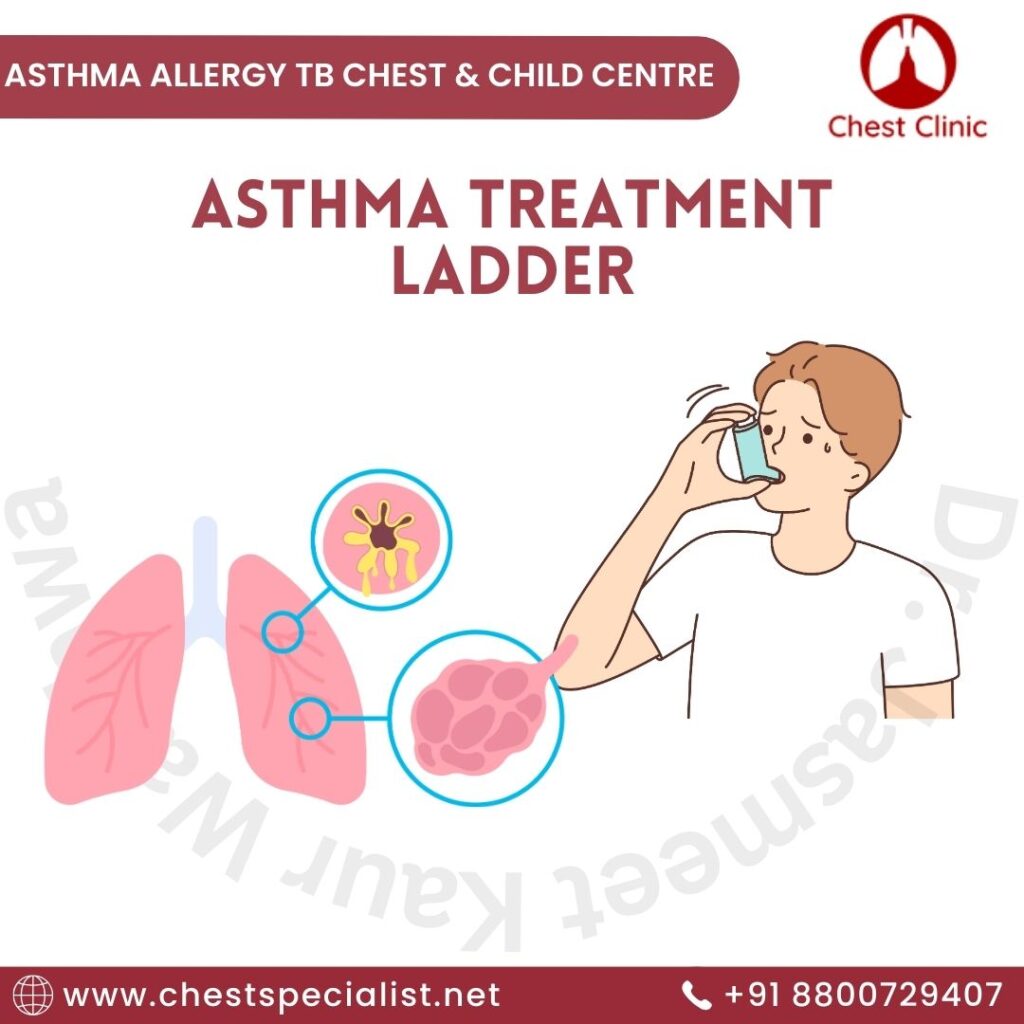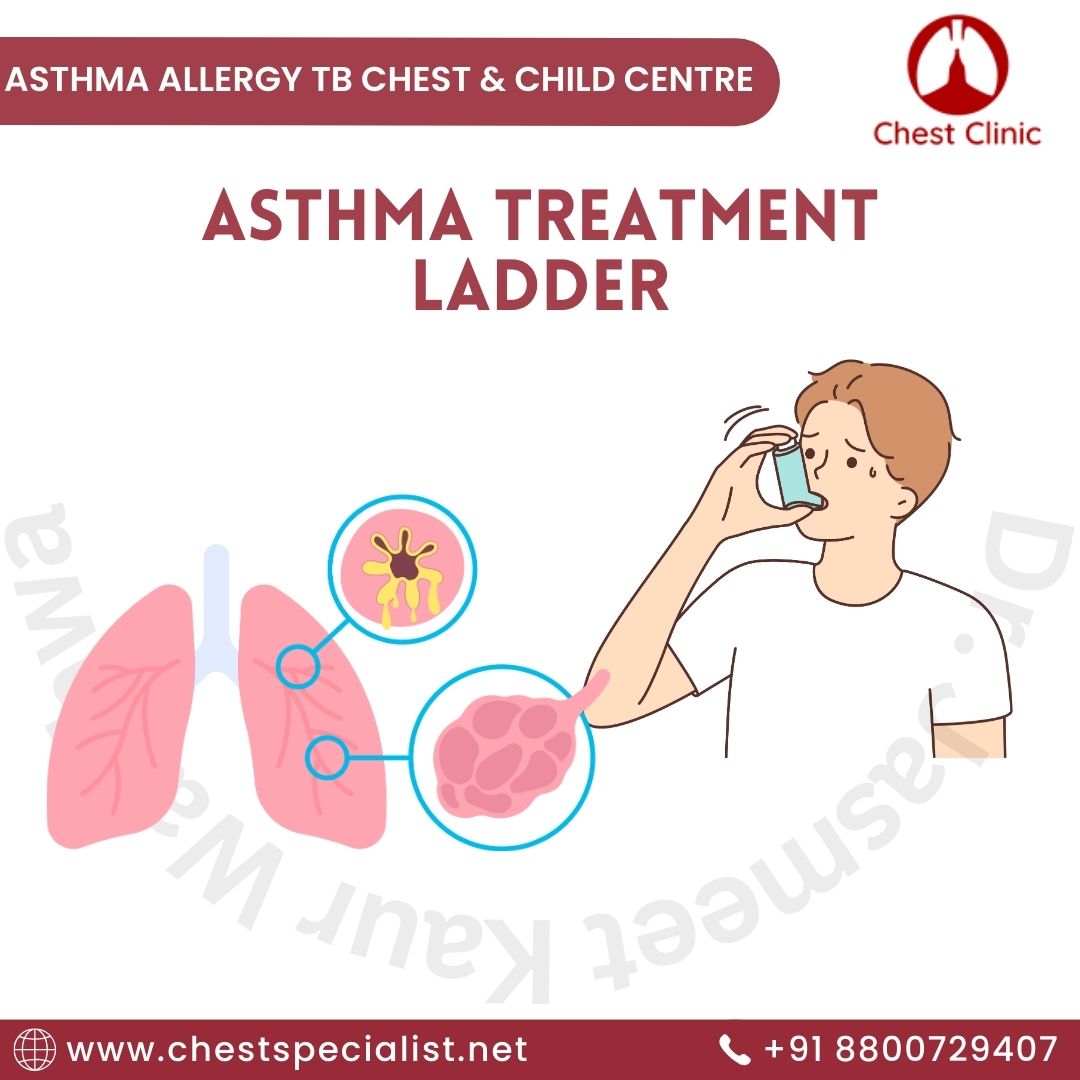chestspecialist development2024-08-23T17:50:38+00:00
Asthma is a prevalent chronic respiratory condition among children, affecting their quality of life. Effective management is essential to help them lead healthy, active lives. The “asthma treatment ladder” is a stepwise approach designed to optimize asthma control with the least amount of medication necessary. Below is an overview of this approach and how it aids in managing asthma in children.
Understanding Asthma
Asthma is marked by inflammation and narrowing of the airways, leading to symptoms like wheezing, coughing, shortness of breath, and chest tightness. The frequency and severity of these symptoms can vary, often triggered by allergens, infections, exercise, or environmental factors.
The Asthma Treatment Ladder
The asthma treatment ladder is divided into several steps, each representing a different level of treatment intensity. The objective is to start at the step that corresponds to the severity of the child’s asthma and move up or down the ladder as needed to achieve optimal control.
- Step 1: Intermittent Asthma
Treatment: Short-acting beta-agonists (SABA) as needed.
Medications: Albuterol, levalbuterol.
Purpose: To provide quick relief from acute symptoms. - Step 2: Mild Persistent Asthma
Treatment: Low-dose inhaled corticosteroids (ICS) daily.
Medications: Fluticasone, budesonide.
Purpose: To reduce inflammation and prevent symptoms. - Step 3: Moderate Persistent Asthma
Treatment: Low-dose ICS plus a long-acting beta-agonist (LABA) or medium-dose ICS.
Medications: Combination inhalers (e.g., fluticasone/salmeterol), medium-dose ICS.
Purpose: To improve symptom control and reduce the need for rescue medication. - Step 4: Severe Persistent Asthma
Treatment: Medium-dose ICS plus LABA.
Medications: Combination inhalers with higher doses.
Purpose: To manage more severe symptoms and prevent exacerbations.

- Step 5: Difficult-to-Control Asthma
Treatment: High-dose ICS plus LABA, possibly with additional medications such as leukotriene receptor antagonists (LTRAs) or tiotropium.
Medications: Combination inhalers, montelukast, prednisone, biologics like omalizumab, mepolizumab.
Purpose: For children with asthma that remains uncontrolled despite high-dose medications.
Monitoring and Adjusting Treatment
Regular follow-up is crucial to monitor asthma control and adjust treatment as needed. This includes:
- Symptom Tracking: Maintaining a diary of symptoms, triggers, and medication use.
- Asthma Action Plan: A personalized plan developed with a healthcare provider to manage worsening symptoms and prevent exacerbations.
- Lung Function Tests/Spirometry: Regular measurement of lung function every 6 months to 1 year.
Conclusion
The asthma treatment ladder for children is a dynamic and personalized approach to managing asthma. By starting with the appropriate level of treatment and adjusting as needed, child allergy or chest specialists can help children achieve optimal asthma control and lead healthy, active lives. Regular communication and follow-up with your doctor, education, and lifestyle adjustments are key components of successful asthma management.
One of the leading experts in this field, Dr. Jasmeet Kaur Wadhwa, is a renowned best pulmonologist in Delhi and allergist specializing in pediatric asthma care. Dr. Wadhwa is dedicated to helping children and their families navigate the complexities of asthma management, ensuring that each child receives personalized and effective treatment. By understanding and following the asthma treatment ladder, parents and caregivers can actively contribute to their child’s asthma care, ensuring they breathe easier and enjoy daily activities.


Leave a Reply